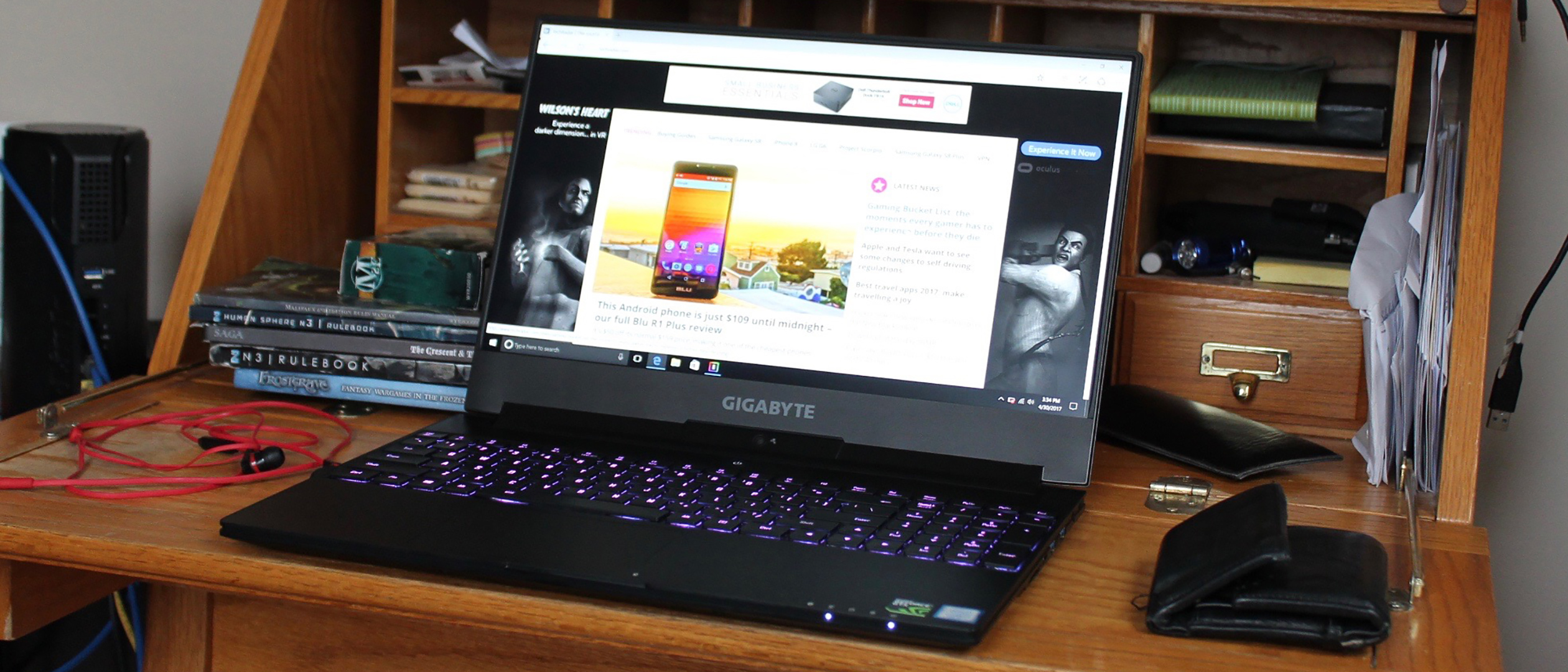TechRadar Verdict
A stunning display and awesome battery make the Aero 15 a great gamer. Unfortunately uncomfortable inputs prevent it from also being a workhorse.
Pros
- +
Fully programmable RGB keyboard
- +
Vibrant display
- +
Class leading battery
Cons
- -
Uncomfortable inputs
- -
Noisy fan and keys
Why you can trust TechRadar
Looking for the latest and greatest version of the Gigabyte Aero 15? We've got the full review on the newest version featuring hexa-core Intel Coffee Lake processors.
Laptop on the inside, envelope on the outside, the Gigabyte wants to mail the Aero 15 into gamer caves and boardrooms alike. With its programmable keyboard, Kaby Lake Core i7, Nvidia GTX 1060 GPU, and an enduring battery, the Aero 15 is the next do-it-all device attempting to show up the suddenly vulnerable MacBook Pro.
The Aero 15 may be ready for anything – but so are its competitors, the Razer Blade and Origin EVO15-S. All pack similar hardware at comparable prices. But in this game of inches, it’s the little things that put a device over the top, and fortunately for the Aero 15, it’s got plenty.
It doesn’t have everything, though. Uncomfortable inputs make it more gamer than worker, despite what Gigabyte’s marketing says. Nonetheless, the Aero 15 is greater than the sum of its parts. Even better, the sum of its parts isn’t going to put much of dent (relatively speaking) in your wallet.
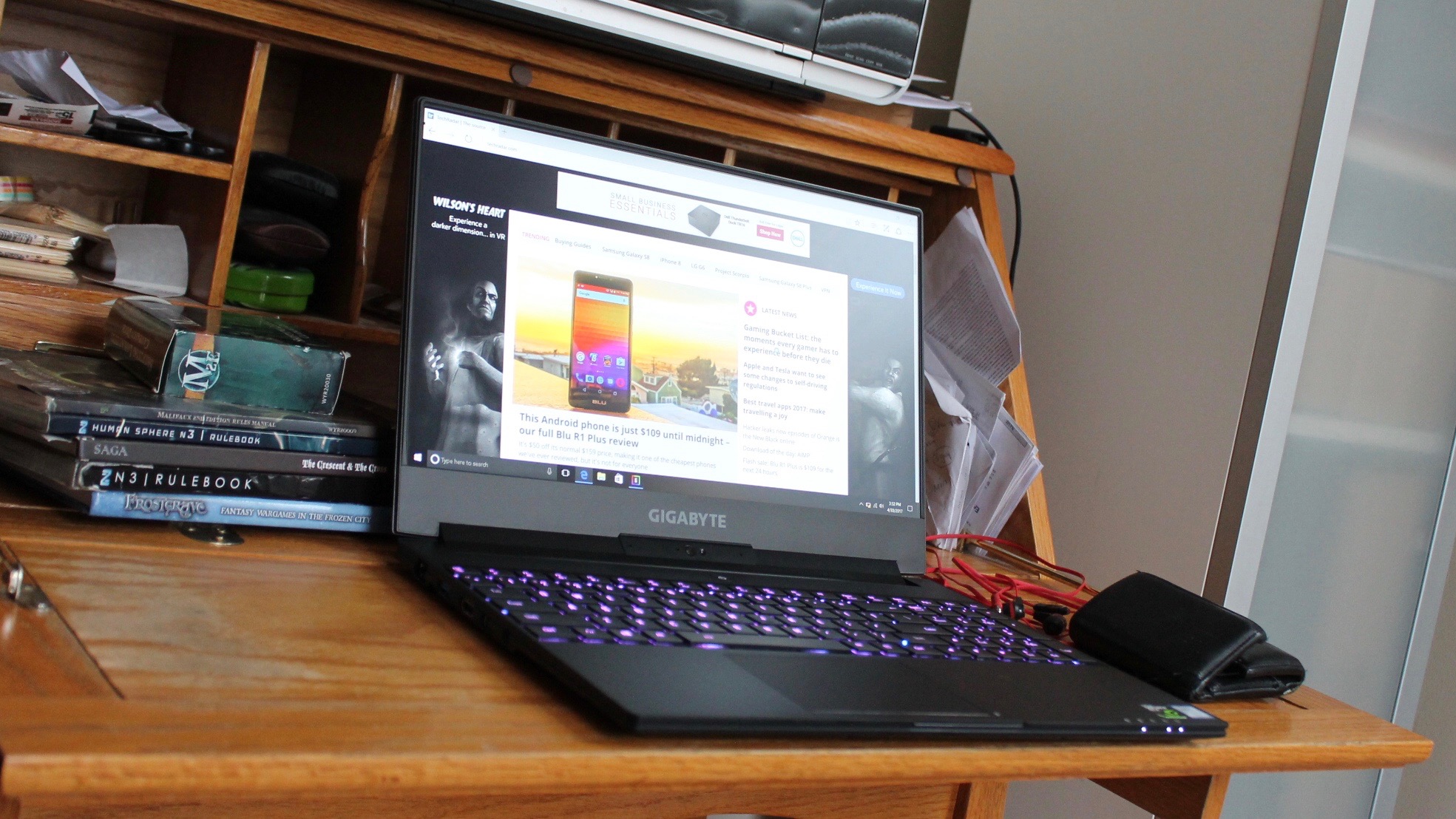
Here is the Gigabyte Aero 15’s configuration sent to techradar for review:
CPU: 2.8GHz Intel Core i7-7700HQ
Graphics: NVIDIA GeForce GTX 1060, Intel HD Graphics 630
RAM: 16GB DDR4-2400
Screen: 15.6-inch, 3840 x 2160 FHD Wide View Angle
Storage: 512GB M.2 SATA SSD
Ports: 3 x USB 3.0 ports, HDMI port, Mini DisplayPort, Thunderbolt 3, Headphone/Microphone combo jack, Ethernet port, SD Card Reader
Connectivity: Intel Dual Band Wireless AC 8265 plus Bluetooth
Camera: HD Camera
Weight: 4.62 pounds (2.1kg)
Size: 13.1 x 9.8 x 0.78 inches (33.3 x 24.9 x 1.9cm; W x D x H)
Price and availability
Currently, Gigabyte is offering only one version of the Aero 15, a FHD capable unit priced at $1,899 (about £1,471 and AU$2,541). Rumor has it that a UHD version will be coming in June, though the price is unconfirmed (probably something north of $2,000).
That’s pretty good considering the hardware you’re getting and it’s the most affordable of the bunch. The Razer Blade and Origin EVO 15-S specced to meet the Aero 15’s configuration costs $2,099 (£1,999, AU$3,099) and $2,317 (about £1,847, AU$3,003), respectively.
If you stripped the panelling off the Aero 15, Razer Blade, and Origin EVO15-S, and just compared their hardware, you’d have a hard time telling them apart. However, one anomaly of the Aero 15 is it’s SATA storage. The Aero 15 prioritizes size (and cost savings) over speed – unlike the Razer Blade, which includes faster PCIe storage even at its base model.
With its 512GB PCIe SSD, the EVO15-S combines the best of both world. This potency does come at a price: Origin’s device costs $500 more than its competitors.
The Aero 15’s Thunderbolt 3 is a welcome addition to the line, especially as 4k video editing becomes a thing. Its inclusion makes Gigabyte’s laptop a better competitor with the MacBook Pro.
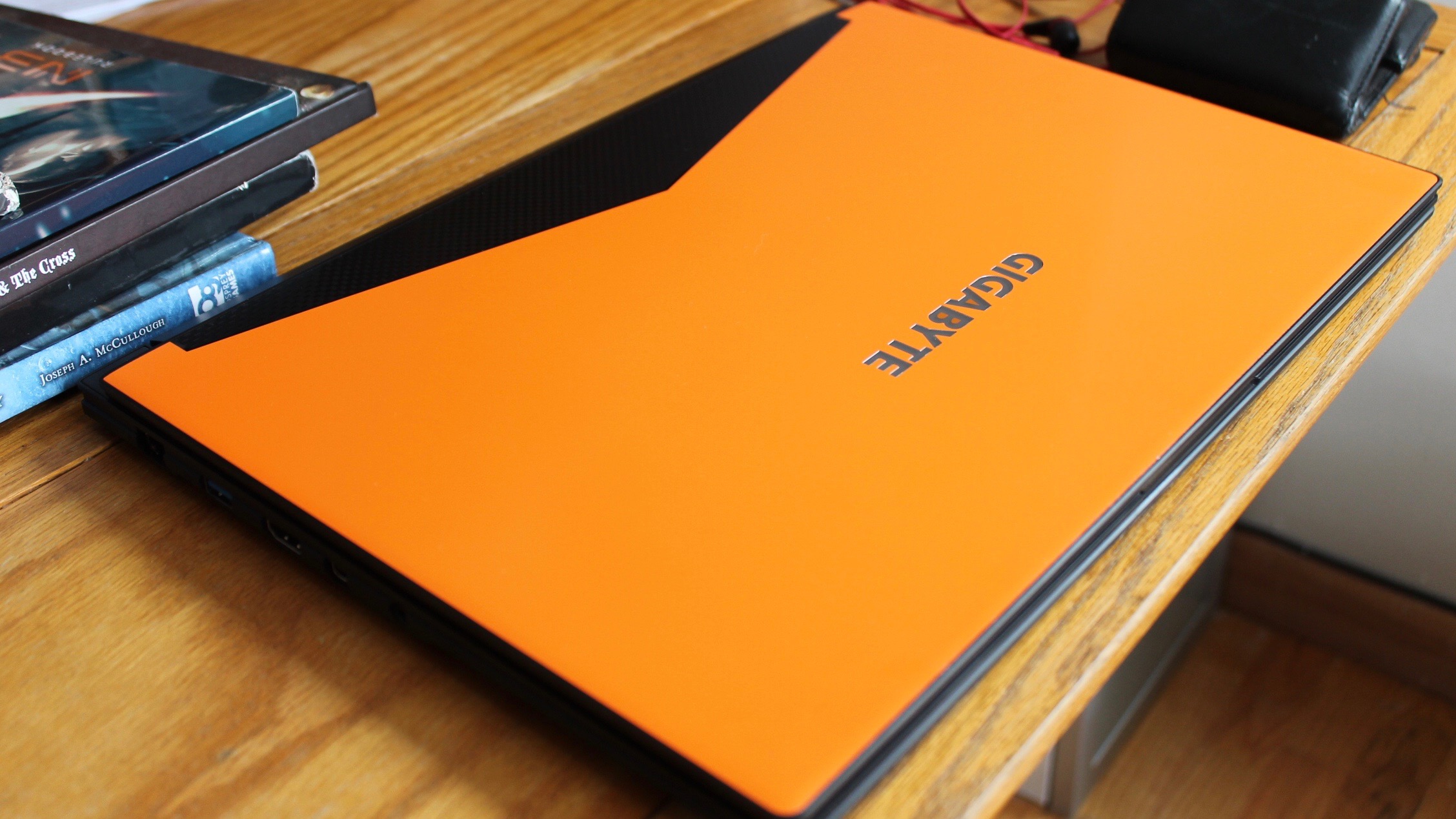
FedEx approved
The Aero 15 comes in three Halloween-inspired colors: jack o'lantern orange, slimer green, and grim reaper black (my descriptions, not Gigabyte’s). Couple this with the Aero 15’s flat-rate-shipping-envelope panelling and you have a device whose design is more “kid-tested, mother-approved” than Gigabyte’s suggested “For Work/For Game.”
‘But this laptop plays the video games good!’ Sure, and that’s all anyone is going to think it does.
We just can’t see this device showing up under the arm of an sales rep during a client visit – at least not the more colorful models. Gigabyte is trying to appeal to professionals too (as well as the cafe-frequenting Mac user), and the Aero 15’s look works against that.
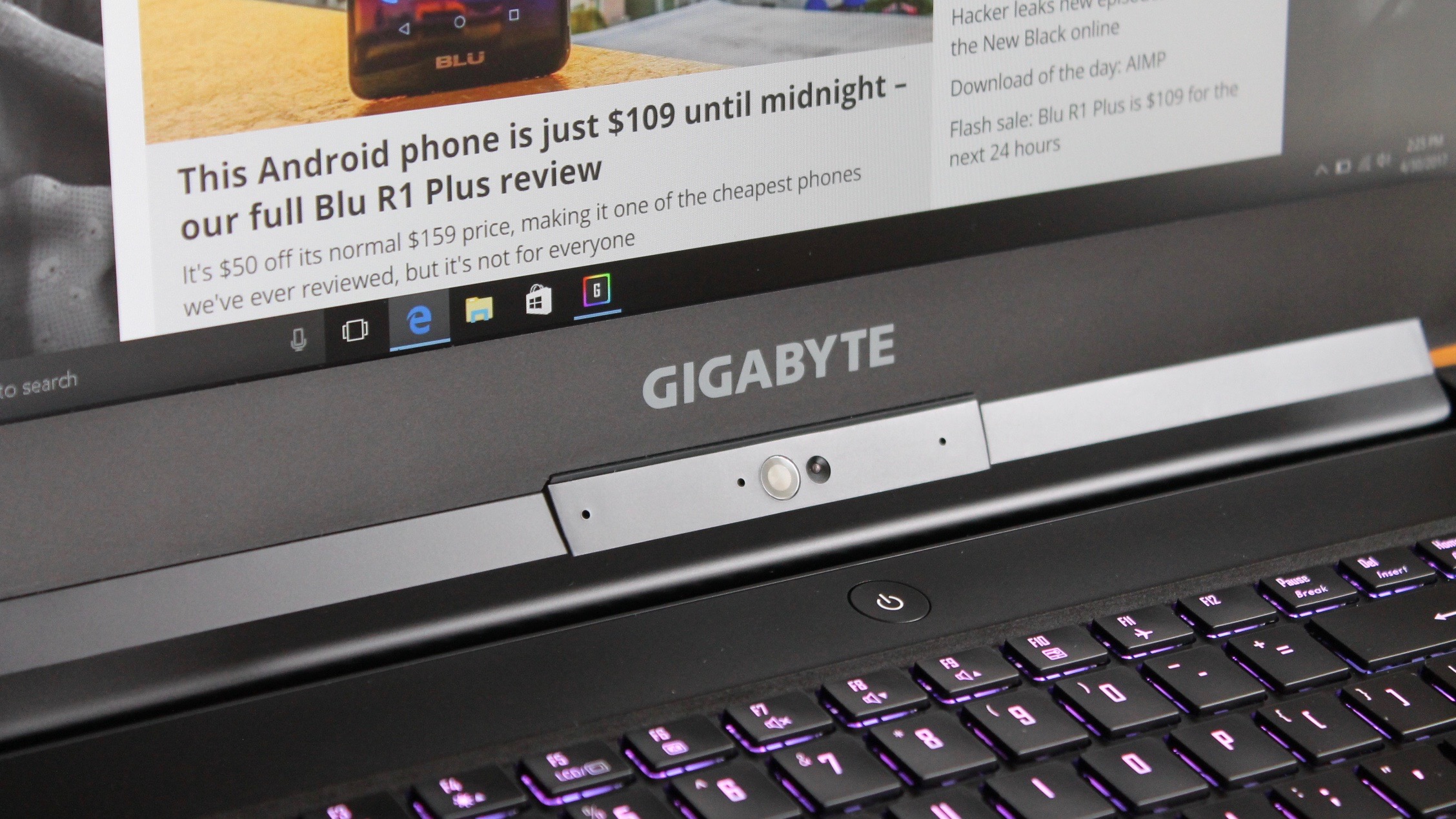
Not all is lost though! Flip open the Aero 15 and you’ll find a well-thought out and dare I say, good-looking interior. It’s matte black only in here, which gives the screen and base a gravitas that is missing from the back panel (the downside to matte, of course, is that it’s easily smudged).
In here, the screen is clearly the centerpiece. On paper it’s 15.6 inches, but thanks to a miniscule bezel it seems much smaller. Gigabyte also smartly moved the Aero 15’s webcam, light sensor and mic to the hinge.
Its arguably a design aped from the Dell XPS 15, but it works. The unorthodox web cam location keeps the bezel slim and free from clutter.
The Aero 15’s 4.62 pounds is evenly spread around the whole unit, giving the laptop a dense but not obtrusively heavy feel. The Origin EVO15-S and Razer Blade are slightly lighter: they weigh in at 4 and 4.16 pounds, respectively.
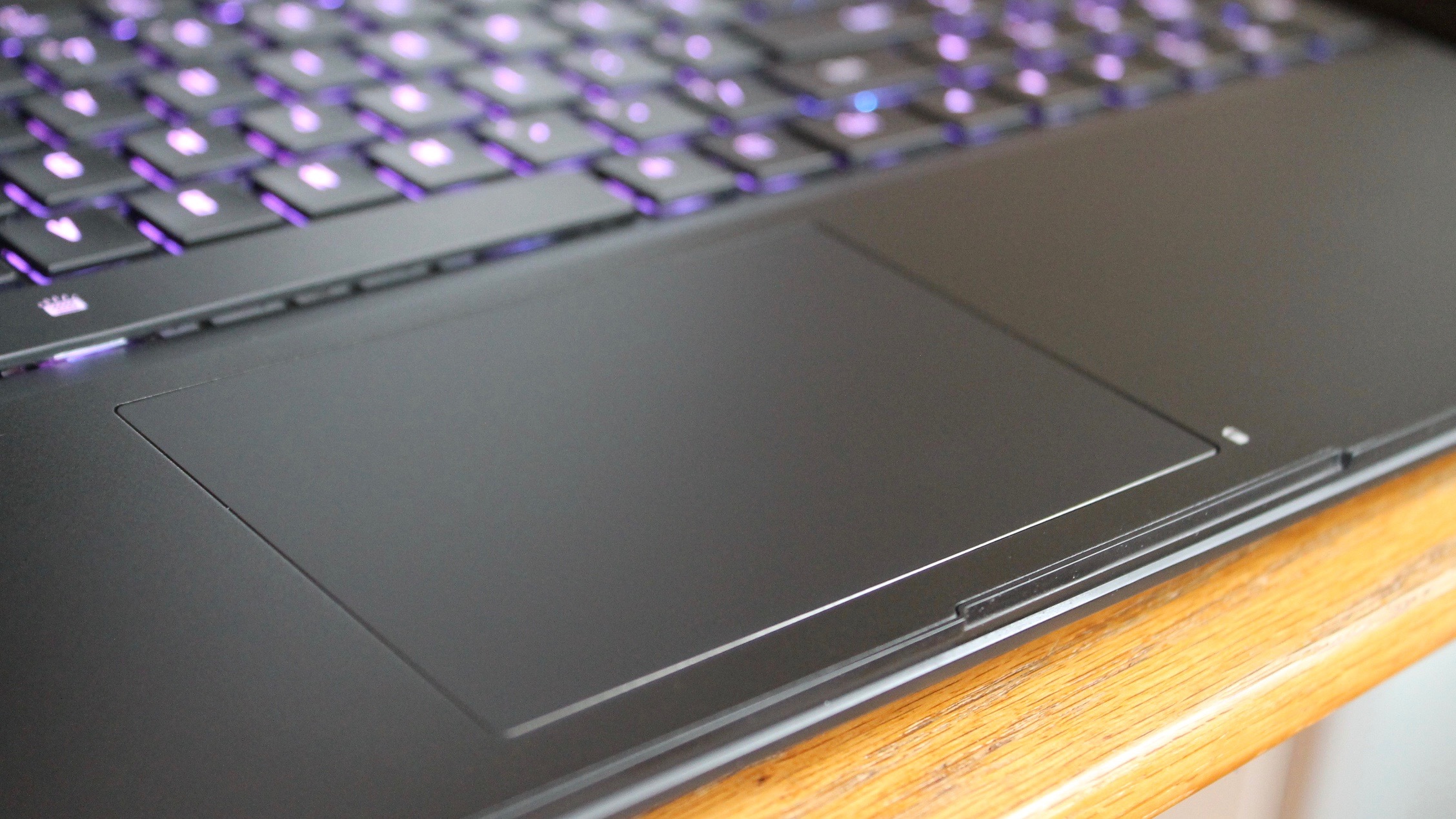
Macro positives and macro negatives
When it comes to the Aero 15’s inputs, there’s a lot to hate, but also plenty to love.
First, the hate. The glass touchpad is big and supports Windows 10 gestures, but it’s tracking is imprecise. More importantly, so is its left click/right click detection. This makes it particularly unfriendly to enterprise users (and gamers too, although they’ll care less).
This laptop is far from rodent-proof, in fact, you’ll absolutely need one.
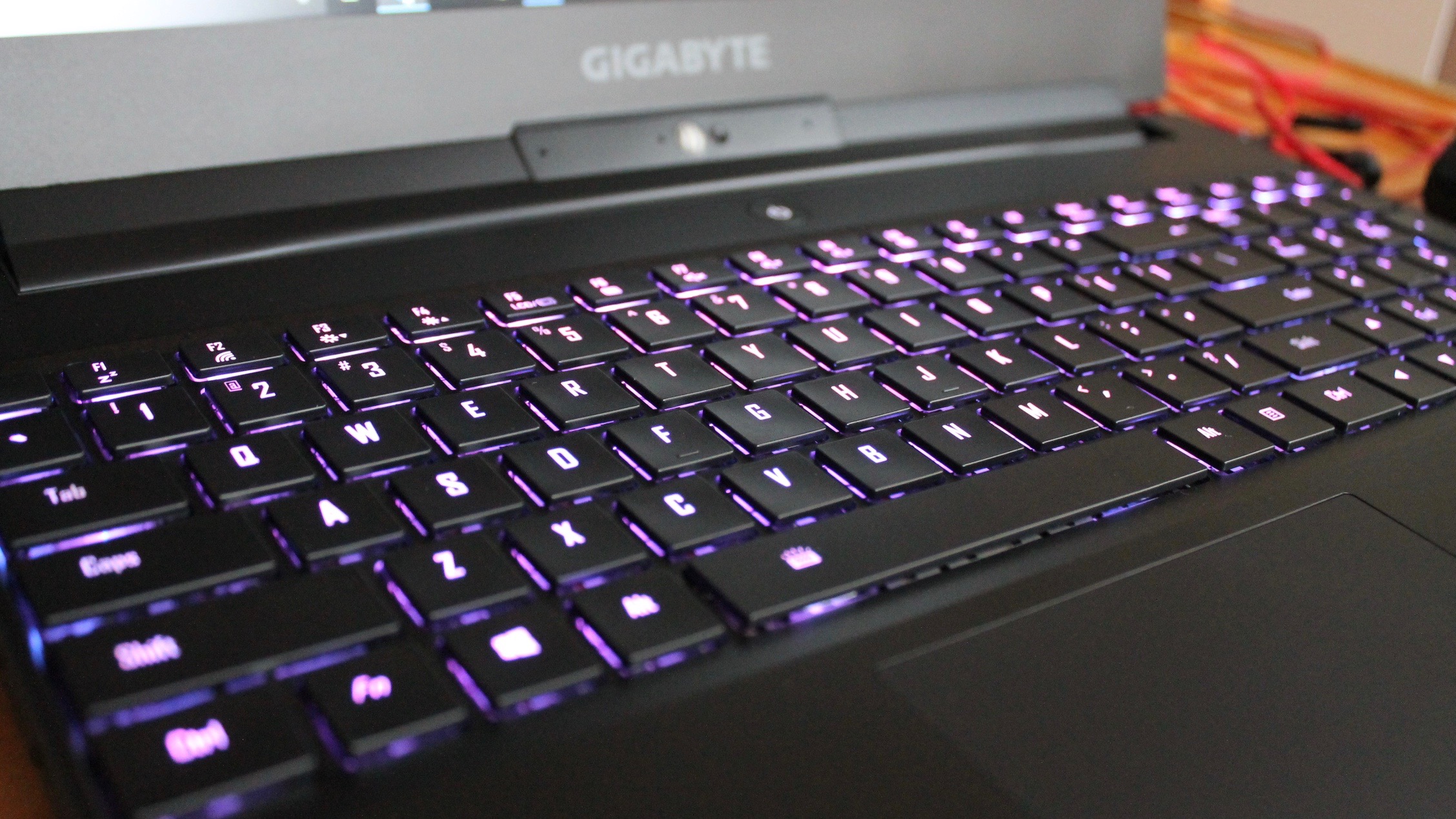
The Aero 15’s keyboard also suffers from feedback issues. In its case, there’s too much: the action of the keys is just too stiff for long-term comfortable use. Plus, stiff keys make for loud typing. While these two things might appeal to gamers, they’re big annoyances in the office.
Now for the love: the keyboard. (Wasn’t I just complaining about it?) Well, feedback and noise aside, it’s actually pretty nifty.
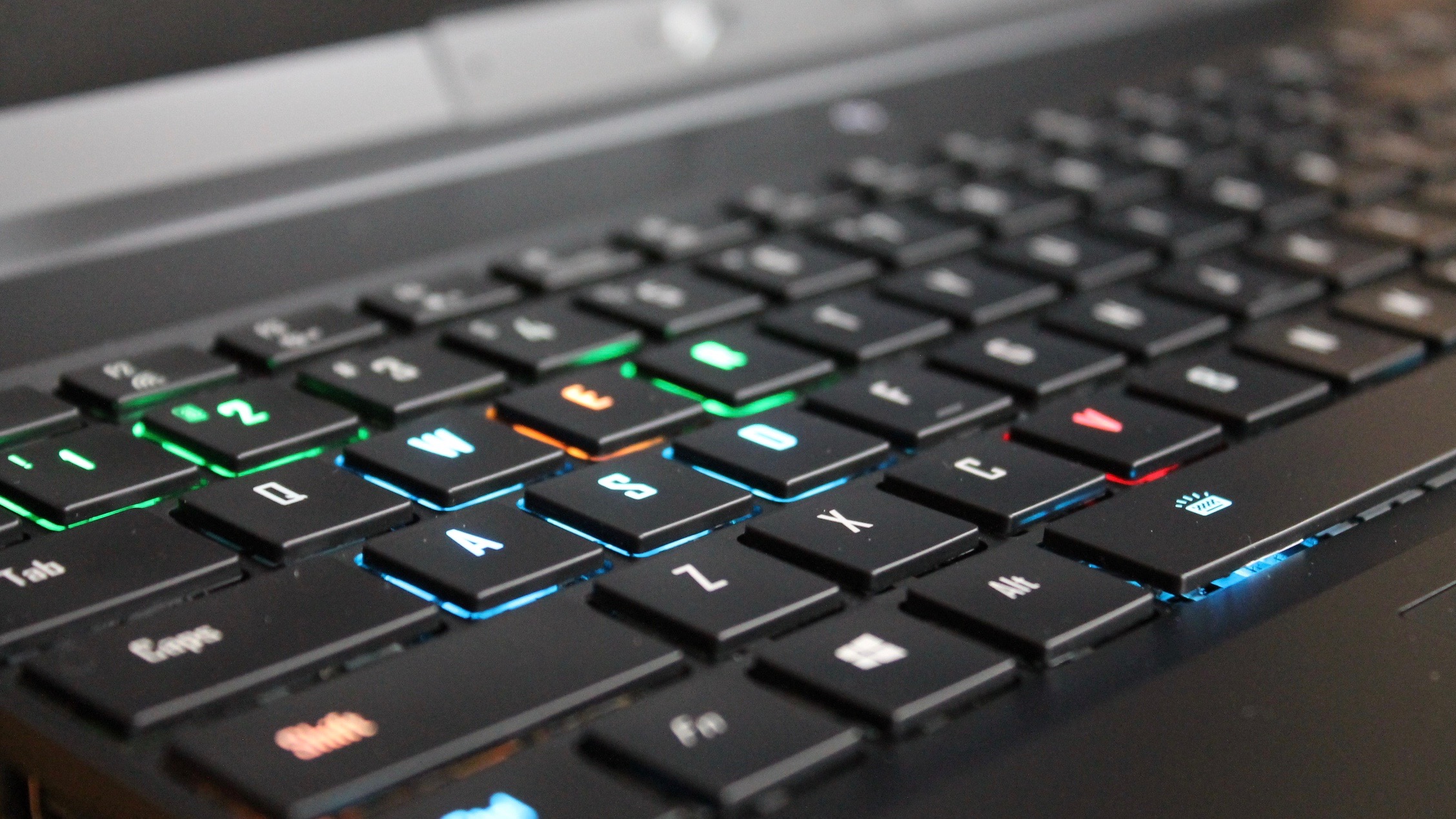
Gone are the “G” macro keys of the Aero 14. They’ve been moved out to make room for a full number pad. Macro functionality still exists though, and in fact, it’s expanded: every key on the board is now mappable. It’s one of the Aero 15’s best features – one that both gamers and business users will appreciate.
A fairly intuitive desktop app allows users to program the Aero 15’s keyboard and full RGB backlight (the app is called Gigabyte Fusion – get it?) Click on a key in the utility, and assign a macro, shortcut or app to it. Not too hard at all.
The backlight can be modified just as extensively: 7 colors are available, as well as 5 customizable and 13 pre-set lighting effects (including sets for genre, like FPS and Strategy, and for popular games like Overwatch and StarCraft). Each user can save their settings to their own unique profile too.
Nifty indeed.
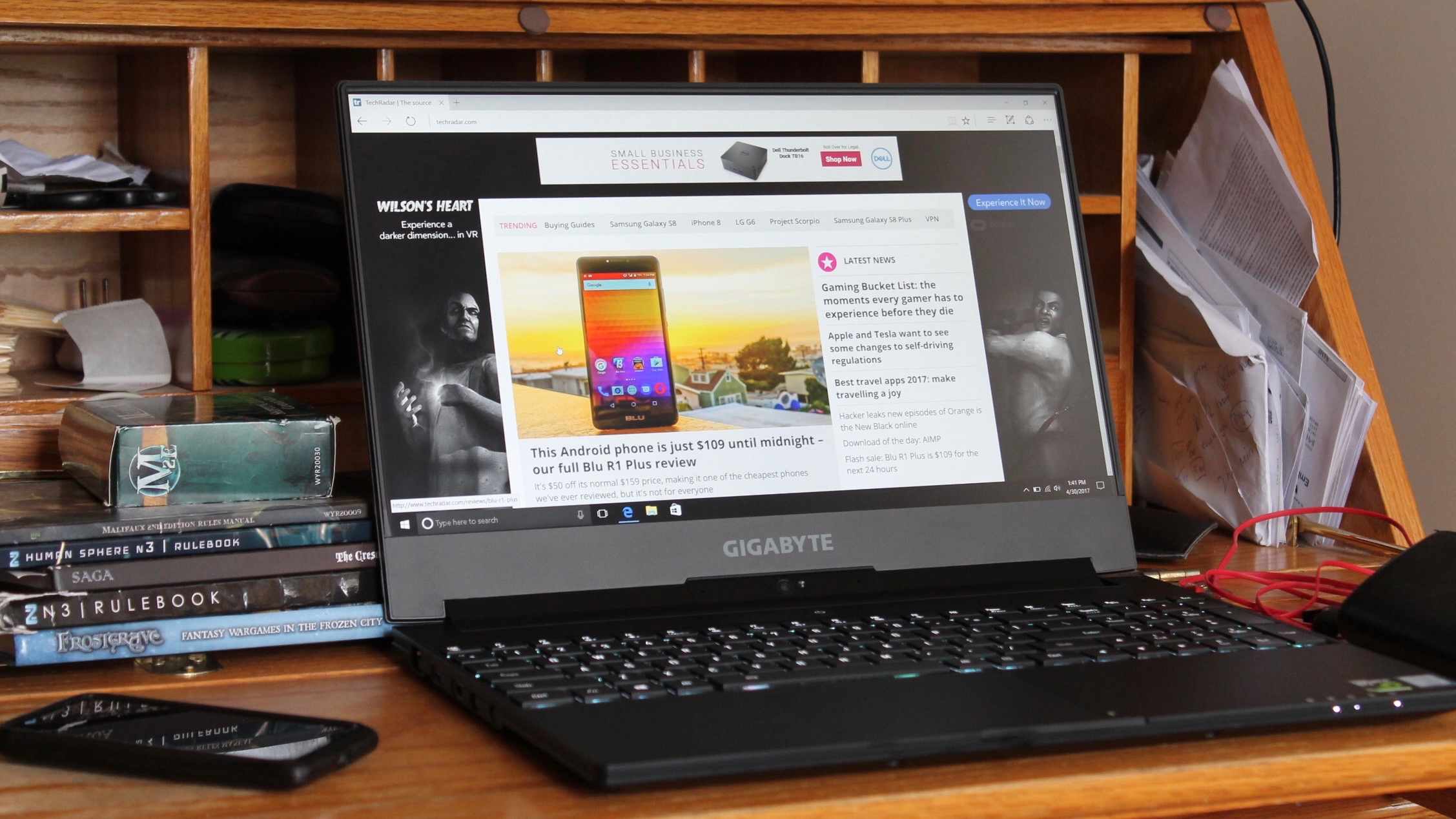
The X-Rite stuff
The display on our Aero 15 test unit may have been “only” 1080p, but it is no less impressive (and in my humble opinion, 1080p is more than enough at this size screen).
The Aero 15 actually comes with a blessing straight from the pope of color, X-Rite Pantone, and that’s nothing to shake a censer at. It’s definitely worthy of its blessing: the Aero 15’s colors are decadent dessert rich. You can also reliably use this as a media workhorse knowing the colors on the screen have been industry certified.
Although the display isn’t touch-capable, its wide viewing angles, glare-killing matte finish, and sharp colors are the chocolate syrup, whip cream, and cherry on top. Its programmable keyboard may be the Aero 15’s best feature, but its display is a close second.
